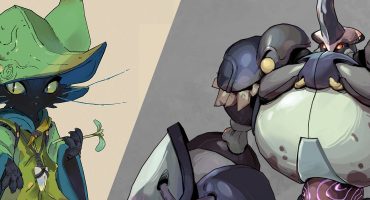I am an archaeologist and Director of Access 3D Lab at the University of South Florida, and on Sketchfab I am “Access3D.” The goal of my work is to mobilize digital technologies to propel transformative research in STEM fields, the arts and the humanities, and my mantra is that “3D is just the beginning.”
At the lab I direct, we begin with 3D data and see where it can take us – in terms of academic scholarship that opens new fields of inquiry and advances scientific understanding, and public outreach that raises awareness of heritage and culture on a global scale. Sketchfab is an instrumental resource for us in pursuit of these goals.
Background
I went on my first archaeological excavation at a Neolithic site in northern Greece in 2006, while working on my B.A., and was hooked. I loved the adventure of travelling overseas for months at a time, exploring new cultures and, of course, working on the excavation itself. Over the next decade, I became an avid field archaeologist, working on projects in New York (Levanna), Greece (Dispilio and Gournia), and Turkey (Çatalhöyük and Seyitömer Höyük). Along the way, I earned an M.A. and a Ph.D. in anthropology, with a focus on the origins of urbanism in Bronze Age Anatolia.
While researching the relationship between architecture and power at Seyitömer Höyük in Bronze Age Anatolia, it occurred to me that a 3D model would capture the visual properties of the urban built environment much better than the 2D site plans I was working with at the time (Fig. 1). The fact that the site was a salvage excavation under direct threat from destruction due to coal mining activity provided a further justification to create a digital reconstruction. I embarked on a research project to bring the site to life in 3D, in order to better understand the nonverbal messages encoded within the built environment, and to reconstitute destroyed in-situ archaeological remains and encourage further analysis. This project opened the door for me to begin working professionally in the digital heritage field.
 Fig. 1: The impetus for my entrance into the 3D world: I’m looking at a 2D site plan while at the Seyitömer Höyük excavation and identifying a need for a 3D representation of the site.
Fig. 1: The impetus for my entrance into the 3D world: I’m looking at a 2D site plan while at the Seyitömer Höyük excavation and identifying a need for a 3D representation of the site.Since then, I have fully embraced the world of digital heritage, and have worked on projects through all stages of the data lifecycle from data collection through archiving. In my position at the University of South Florida, I’ve been lucky enough to carry out 3D documentation and research projects at historic monuments, archaeological sites, and museums throughout the United States, Spain, Italy, and Turkey with terrestrial laser scanners, structured light scanners, laser scan arms, drones, and photogrammetry.
My research agenda has taken many interesting turns because I work collaboratively with faculty from many fields at my university, and partner with outside organizations to pursue digitally-driven research. While I continue to do research in the digital heritage sector, I also form partnerships to explore applications of 3D technologies in new contexts such as early childhood education, marketing and communications, and the arts, among many others.
There are three key areas in which I strive to advance research in 3D through my work at Access 3D Lab:
1. Applied digital heritage approaches
The field of digital heritage has matured beyond its early focus on documentation. Now, researchers are leveraging 3D datasets to further scientific inquiry and engage broader audiences with their findings. A great advantage of Sketchfab as a dissemination platform is its global reach and simple user interface. This came in handy during a digital literacy lesson we held at the lab for preschoolers, in which we demonstrated 3D scanning and displayed finished models on Sketchfab (Fig. 2).
 Fig. 2: Students from the USF Preschool for Creative Learning explore heritage models on Sketchfab, after learning about 3D scanning.
Fig. 2: Students from the USF Preschool for Creative Learning explore heritage models on Sketchfab, after learning about 3D scanning.2. Advancing 3D methodologies
Digital heritage is in a stage of rapid growth, which offers multiple opportunities for tremendous creative expression. Recently at the lab we’ve been experimenting with scanning metal objects, including some beautiful gold pendants and ornaments from Central America. Our new Faro 8 axis scanner did a beautiful job of capturing the geometry of these challenging objects but had some difficulty with the texture. Fortunately, we were able to develop a new workflow for texturing the model in Zbrush, which yielded beautiful results (Fig. 3).
3. Student training and professional development
Applied technology skills are a driver of workforce success. At the lab I direct, we offer several levels of @Access3D badges to students who complete significant independent scanning and 3D processing projects (Fig. 3). The results of these projects often end up in an online portfolio on our Sketchfab page. So far, we have had students from departments of Computer Science, Communications, Geosciences, Economics, History, Anthropology, and Public Affairs complete projects. One of our favorites is this photogrammetry model of a log cabin, created by Joshua Torres and Cory Draper in the Drone Videography class at USF.
 Fig. 3: Students present their 3D printed @Access3D gold badges, earned during a professional development workshop in Terrestrial LiDAR scanning.
Fig. 3: Students present their 3D printed @Access3D gold badges, earned during a professional development workshop in Terrestrial LiDAR scanning.Women in Tech
I am proud to be part of the growing community of women working in the tech sector. Sketchfab plays an important role in furthering the goals of this community by empowering us with their global dissemination platform. I am excited to pursue my work in the context of a digitally-engaged future and am looking forward to advancing the role of women in this exciting field, along with Sketchfab.
Email Laura / Facebook / Twitter / Instagram / LinkedIn / USF Access 3D Lab



